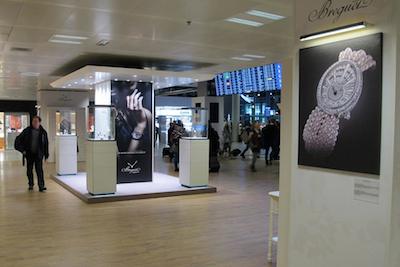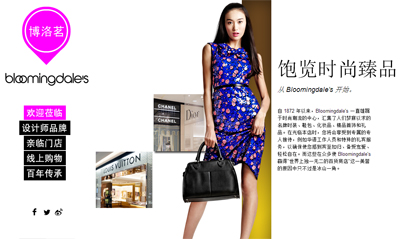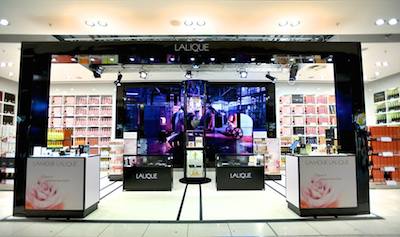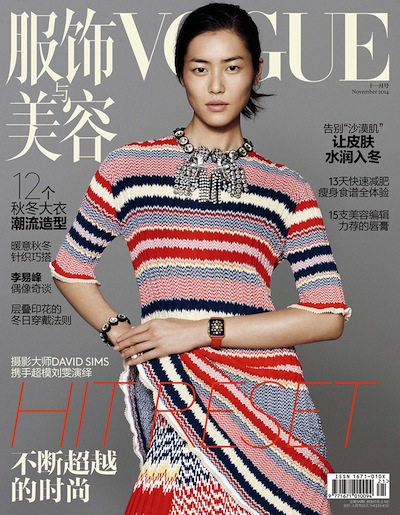 Who is the affluent Asian consumer? Image courtesy of Gucci
Who is the affluent Asian consumer? Image courtesy of Gucci
While much attention has been paid to the spending power and penchant for luxury goods among Chinese consumers, brands cannot assume that the same exact attitude and shopping habits exist across all Asian countries, according to findings from Agility Research.
China’s maturing luxury buyers care most about quality and exclusivity, while in other areas, such as Hong Kong and Singapore, luxury is more defined by a lofty price point. As luxury brands spread out and increase operations throughout Asia to reach what will be 1 billion affluents over the next 10 years, understanding the nuances and personality traits typical in particular countries can help them more accurately market to residents.
"One of the most common misconceptions about affluent Asian consumers is that they are all the same," said Amrita Banta, managing director at Agility Research & Strategy. "From our research, we have found that the perception of luxury among consumers in the various markets is different.
"In China, the respondents interviewed defined luxury as quality. Owning a luxury item is seen as a status symbol," she said. "In Hong Kong, although quality is important, luxury is equated to expensive items that are designer made and exclusive.
"All markets and consumers have different nuances and no one strategy fits all, which is why brands need to continuously monitor these changing dynamics."
Agility’s “Affluent Insights” research presented at Retail Congress Asia Pacific 2015 covers the top 25 percent of consumers in Asian countries, based on household income. For China, this is families with incomes of $29,000 or more.
Consumer profiling
Affluent Asian consumers can be split into four different categories, based on their behavior and shopping preferences.
The “Exclusivity Seeker” has a large disposable income to spend on luxury products in a number of categories, while the mostly male “Indulgent Traveler” splurges at airports, primarily on hard luxury goods such as watches and jewelry.
 Breguet exhibit at Geneva Airport
A “Virtual Shopper” is open to browsing for luxury online, prioritizing unique finds, and the “Luxury Bargain Hunter,” who has the least buying power, prefers to buy items tax-free, but spends more than her counterparts on electronics.
Brands can use psychographic information to help them fine tune their marketing strategies and targeting to reach the right consumers within the luxury space. For example, the Exclusivity Seeker buys luxury for its heightened quality, while the Indulgent Traveler looks to luxury goods as a social status symbol, looking for labels and brands that are easily recognizable to others.
Different countries in Asia have varied proportions of the personalities. For example, Hong Kong has the highest rate of Indulgent Travelers, while mainland China has the most Exclusivity Seekers. Singapore affluents are most likely to be Luxury Bargain Hunters, with 34 percent of those surveyed identifying as such.
Breguet exhibit at Geneva Airport
A “Virtual Shopper” is open to browsing for luxury online, prioritizing unique finds, and the “Luxury Bargain Hunter,” who has the least buying power, prefers to buy items tax-free, but spends more than her counterparts on electronics.
Brands can use psychographic information to help them fine tune their marketing strategies and targeting to reach the right consumers within the luxury space. For example, the Exclusivity Seeker buys luxury for its heightened quality, while the Indulgent Traveler looks to luxury goods as a social status symbol, looking for labels and brands that are easily recognizable to others.
Different countries in Asia have varied proportions of the personalities. For example, Hong Kong has the highest rate of Indulgent Travelers, while mainland China has the most Exclusivity Seekers. Singapore affluents are most likely to be Luxury Bargain Hunters, with 34 percent of those surveyed identifying as such.
 Bloomingdale's China microsite
When respondents from the countries surveyed were asked to define “luxury,” the word maps created show the variations between emerging and more established markets. For instance, quality is most prominent for China, and a number of brands appear fairly legibly, while Hong Kong, Indonesia and Singapore’s maps are dominated by “expensive,” with brand names mentioned less frequently.
Agility has identified “Generation AAA,” who are brands’ up-and-coming consumers aged 18-34. They are so named due to their aspiration for brands that demonstrate who they are, ambitiousness and affluence, since their drive will make them the next affluent segment of the population in coming years.
Currently, the AAA consumers have the financial ability and the desire to buy mid- to premium-level goods, and they represent a very affluent part of the middle class. They spend almost equally across categories, including jewelry, technology, air travel, fashion and hotel stays.
Bloomingdale's China microsite
When respondents from the countries surveyed were asked to define “luxury,” the word maps created show the variations between emerging and more established markets. For instance, quality is most prominent for China, and a number of brands appear fairly legibly, while Hong Kong, Indonesia and Singapore’s maps are dominated by “expensive,” with brand names mentioned less frequently.
Agility has identified “Generation AAA,” who are brands’ up-and-coming consumers aged 18-34. They are so named due to their aspiration for brands that demonstrate who they are, ambitiousness and affluence, since their drive will make them the next affluent segment of the population in coming years.
Currently, the AAA consumers have the financial ability and the desire to buy mid- to premium-level goods, and they represent a very affluent part of the middle class. They spend almost equally across categories, including jewelry, technology, air travel, fashion and hotel stays.
 Mandarin Oriental Hong Kong Harbour Room
Their desire to spend on big-ticket items coupled with their budgets makes it more work to capture wallet share.
Sixty-nine percent of generation AAA would like to have an exclusive luxury brand experience before buying a product, and 61 percent care that the brand they buy is socially responsible. Comparatively, only 55 percent feel it is important that people recognize the brand of a particular product.
AAAs embrace digital, with two-thirds researching luxury products online and 47 percent buying them through ecommerce. Fifty-seven percent buy mostly when traveling, in order to get the best prices, take advantage of larger selections and buy duty free.
Mandarin Oriental Hong Kong Harbour Room
Their desire to spend on big-ticket items coupled with their budgets makes it more work to capture wallet share.
Sixty-nine percent of generation AAA would like to have an exclusive luxury brand experience before buying a product, and 61 percent care that the brand they buy is socially responsible. Comparatively, only 55 percent feel it is important that people recognize the brand of a particular product.
AAAs embrace digital, with two-thirds researching luxury products online and 47 percent buying them through ecommerce. Fifty-seven percent buy mostly when traveling, in order to get the best prices, take advantage of larger selections and buy duty free.
 Lalique pop-up within World Duty Free Group in Heathrow
For vacation destinations, Hong Kong was in the top three for China, Taiwan, Indonesia and Singapore. Tokyo and Seoul are also popular holiday spots.
Shopping is the top hobby for AAAs in China, Hong Kong, Singapore and Indonesia, while in Taiwan, cooking is the most popular pastime.
Even with AAAs propensity for digital, online sources are not the top ranked spot where they are more open to advertisements for fashion. Taiwan still looks to television, while China, Indonesia and Singapore are most receptive to ads placed in shopping malls. Print magazines are still top in Hong Kong.
Lalique pop-up within World Duty Free Group in Heathrow
For vacation destinations, Hong Kong was in the top three for China, Taiwan, Indonesia and Singapore. Tokyo and Seoul are also popular holiday spots.
Shopping is the top hobby for AAAs in China, Hong Kong, Singapore and Indonesia, while in Taiwan, cooking is the most popular pastime.
Even with AAAs propensity for digital, online sources are not the top ranked spot where they are more open to advertisements for fashion. Taiwan still looks to television, while China, Indonesia and Singapore are most receptive to ads placed in shopping malls. Print magazines are still top in Hong Kong.
 Vogue China was the first to feature the Apple Watch on the cover
Television is much more dominant for cosmetic efforts, while they pay more attention to jewelry ads in magazines or online content sites.
"Luxury brands should pay close attention to Generation AAA because they are a rapidly growing segment," Ms. Banta said. "Their disposable income and overall spending on luxury items will increase significantly in the next decade.
"Luxury brands can reach out to AAA consumers by first understanding their demographics and psychographics," she said. "Who are they? Where do they spend? What are their hobbies? How do they perceive luxury? What are the things that are most important to them?
"We help our clients to carefully track and analyze these trends across more than 20 key economies across the United States, Europe and Asia Pacific."
Targeted messaging
In certain markets, pop culture reigns supreme, and brands that align themselves with the right phenomenon can see results.
Brands should tailor marketing strategies to use local Web sites, culture and platforms to appeal to consumers in Japan and South Korea, according to a report from L2.
Stable luxury markets and technically savvy populations make the two countries ideal for mobile marketing and ecommerce. An increase in Chinese tourists looking to purchase luxury goods while abroad makes it even more important for brands to focus their attentions on Japan and South Korea (see story).
Consumer habits have shifted within China.
While overall spending in China is back up to where it was in 2013, spending on gifts has decreased 30 percent over the past two years, according to a recent report by Hurun.
Chinese consumers’ preferences when gifting have shifted, and Apple has displaced traditional luxury brands such as Hermès and Louis Vuitton as the top choice of brand for presents (see story).
The definition of luxury and status for Asian consumers is expected to continue to evolve.
"We believe that luxury brands will still attract continued consumption," Ms. Banta said. "There will however be tremendous growth in the number of affordable luxury brands and their popularity among luxury and aspirational consumers.
"The social media engagement among luxury consumers will also play a huge role as these 'masstige' brands evolve," she said. "Social media and digital marketing have no doubt resulted in greater price transparency, choice and availability, however exclusivity and customization will still be desired from discerning consumers."
Final Take
Sarah Jones, staff reporter on Luxury Daily, New York
Vogue China was the first to feature the Apple Watch on the cover
Television is much more dominant for cosmetic efforts, while they pay more attention to jewelry ads in magazines or online content sites.
"Luxury brands should pay close attention to Generation AAA because they are a rapidly growing segment," Ms. Banta said. "Their disposable income and overall spending on luxury items will increase significantly in the next decade.
"Luxury brands can reach out to AAA consumers by first understanding their demographics and psychographics," she said. "Who are they? Where do they spend? What are their hobbies? How do they perceive luxury? What are the things that are most important to them?
"We help our clients to carefully track and analyze these trends across more than 20 key economies across the United States, Europe and Asia Pacific."
Targeted messaging
In certain markets, pop culture reigns supreme, and brands that align themselves with the right phenomenon can see results.
Brands should tailor marketing strategies to use local Web sites, culture and platforms to appeal to consumers in Japan and South Korea, according to a report from L2.
Stable luxury markets and technically savvy populations make the two countries ideal for mobile marketing and ecommerce. An increase in Chinese tourists looking to purchase luxury goods while abroad makes it even more important for brands to focus their attentions on Japan and South Korea (see story).
Consumer habits have shifted within China.
While overall spending in China is back up to where it was in 2013, spending on gifts has decreased 30 percent over the past two years, according to a recent report by Hurun.
Chinese consumers’ preferences when gifting have shifted, and Apple has displaced traditional luxury brands such as Hermès and Louis Vuitton as the top choice of brand for presents (see story).
The definition of luxury and status for Asian consumers is expected to continue to evolve.
"We believe that luxury brands will still attract continued consumption," Ms. Banta said. "There will however be tremendous growth in the number of affordable luxury brands and their popularity among luxury and aspirational consumers.
"The social media engagement among luxury consumers will also play a huge role as these 'masstige' brands evolve," she said. "Social media and digital marketing have no doubt resulted in greater price transparency, choice and availability, however exclusivity and customization will still be desired from discerning consumers."
Final Take
Sarah Jones, staff reporter on Luxury Daily, New York
